Table of Contents
Are you suffering from vertigo? Get the best treatments for vertigo to relieve your symptoms and regain your balance.
Vertigo is a type of dizziness characterized by the feeling of spinning or swaying. It can affect your balance and make it difficult to perform daily activities. As vertigo can be caused by different medical conditions, its treatment must be tailored to each Filipino patient. This article aims to provide an overview of the treatments available for people suffering from vertigo, including lifestyle changes, medications, and physical therapies.

What is Vertigo?
Vertigo is a complex medical condition characterized by a spinning sensation and dizziness. It can be caused by many different things, from inner ear infections to neurological disorders. The symptoms of vertigo vary depending on the specific cause. Still, Filipino sufferers generally experience episodes of intense dizziness that make it difficult for them to maintain their balance or focus their vision.
It is important to note that vertigo is not just a feeling of lightheadedness or being unbalanced, as these can be associated with other conditions such as fainting spells, dehydration, or low blood sugar. Vertigo causes an individual’s surroundings to appear spinning around them and often causes nausea and vomiting. In extreme cases, individuals may also experience loss of hearing or ringing in one ear.

Causes of Vertigo: Common Triggers
Vertigo may be caused by inner ear problems, central nervous system disorders, or other medical conditions. Common triggers for vertigo include head trauma, certain medications, alcohol consumption, stress, and anxiety.
The most common form of vertigo is benign paroxysmal positional vertigo (BPPV), which is caused by changes in the position of the head. In BPPV, small calcium particles move into one of the canals in your ear, causing a sudden sense of spinning when you move your head. Other forms of vertigo are linked to viral infections, such as vestibular neuritis and Meniere’s disease, which commonly cause severe dizziness and ear ringing or hearing loss.
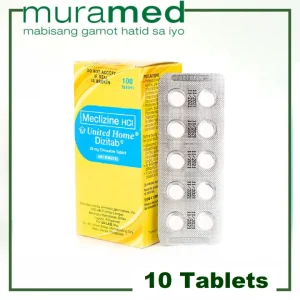
Symptoms of Vertigo: What to Look For
People suffering from vertigo often report feeling dizzy, off balance, and having a sensation of spinning. To properly diagnose and treat vertigo, it is important to understand the potential symptoms and what causes them.
Common symptoms of vertigo include lightheadedness or feeling faint, headaches, ringing in the ears (tinnitus), nausea or vomiting, and difficulty concentrating. It is also common for individuals with vertigo to experience blurred vision or double vision, slurred speech, and episodes of loss of hearing. People may also feel unsteady on their feet or have trouble walking in a straight line.
Additionally, individuals with vertigo typically report difficulty sleeping due to constant dizziness or other disorienting sensations associated with their condition.

Vertigo Diagnosis: Seeing a Filipino Doctor
Vertigo is a medical condition characterized by feelings of dizziness and loss of balance. It can be caused by several different medical conditions, including stroke, migraines, brain tumors, and other neurological problems. If you experience vertigo regularly, you must see your doctor for an accurate diagnosis.
Your doctor will take your medical history into account when diagnosing vertigo. They may also conduct physical tests such as the Dix-Hallpike test or assessment of ocular movement to determine whether there are any abnormalities in how your eyes move. Additionally, they may order further tests, such as an MRI or CT scan, to look at your inner ear structures and rule out other causes of dizziness.
It is important to discuss all symptoms with a doctor if you think you have vertigo to receive timely and effective treatment.

Treatments for Vertigo: Medicines and Therapies
Medicines such as antihistamines, anticholinergics, steroids, and sedatives may help reduce vertigo-induced dizziness. However, individuals must consult their doctor before taking any of these medications to avoid potential drug interactions or side effects.
In addition to medicines, physical therapy is also an effective treatment for vertigo. Exercises, including head movements and balance activities, may help improve the symptoms of vertigo.

Home Remedy Treatments for Vertigo: Natural Solutions
Vertigo is a condition that affects many people and can be extremely distressing. Various treatments are available for vertigo, but some people prefer to take a natural approach and use home remedies instead. Natural solutions may provide relief from vertigo symptoms without the need for medications or invasive treatments.
Home remedies for vertigo include lifestyle changes such as avoiding triggers, reducing stress levels, getting more rest, and improving overall diet. Practicing head movements like head turning exercises and the Epley maneuver can also help with symptoms. Additionally, herbs such as ginger root or lemon balm may reduce the intensity of vertigo attacks when taken regularly. Supplements such as magnesium and B vitamins are also said to assist in treating vertigo naturally. It is important to consult a healthcare professional before starting any new supplements or herbal remedies due to potential interactions with current medications or conditions.

Dietary Solutions for Vertigo Among Filipinos
Dietary adjustments are one way to treat vertigo naturally. Eating foods high in potassium and magnesium, such as bananas and dark leafy greens, may reduce the severity of vertigo symptoms while providing essential vitamins and minerals needed for overall health. In addition, reducing alcohol intake has been shown to benefit individuals with vertigo due to its effects on the body’s balance system. Caffeine should also be limited as it may increase feelings of dizziness associated with vertigo episodes.
Herbal Remedies for Vertigo Among Filipinos
While there are many treatments for vertigo, herbal remedies are becoming increasingly popular for their effectiveness and minimal side effects.
Herbal remedies for vertigo have been used successfully to reduce symptoms such as dizziness and nausea. Ginger is beneficial in reducing symptoms of vertigo due to its anti-inflammatory properties. Ginkgo biloba is also an effective remedy for improving blood flow to the brain and relieving vertigo-related headaches. Other herbs that have been found helpful include skullcap, valerian root, meadowsweet, chamomile, and lemon balm.
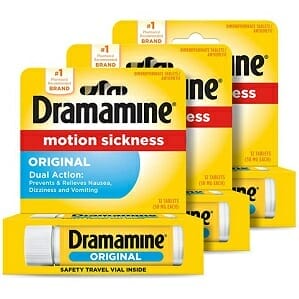
Exercise and Relaxation Techniques for Vertigo
It is important to implement exercise and relaxation techniques to manage vertigo symptoms.
The best type of exercise for those suffering from vertigo is balance exercises. These exercises help improve the vestibular system, which helps with coordination and balance. Balance exercises should be done several times a week for 30 minutes at a time to reduce vertigo symptoms. Examples of balance exercises include standing on one foot or walking heel-to-toe in a straight line without losing your balance.
In addition to physical exercise, relaxation techniques such as yoga or breathing exercises can help alleviate some of the dizziness associated with vertigo.

Physical Therapy Treatments for Vertigo
Physical therapy can play a key role in successfully managing vertigo symptoms.
Physical Therapists are trained in assessing how the musculoskeletal system can affect equilibrium and balance. Through physical therapy interventions, such as manual therapy techniques, strengthening exercises, postural re-education, gait training, and vestibular rehabilitation exercises, physical therapists can help reduce the frequency and severity of vertigo symptoms while improving overall body coordination and awareness of movement.
It is essential to work with a qualified Physical Therapist who has experience treating Filipino patients with vertigo to gain relief from this often distressing condition.
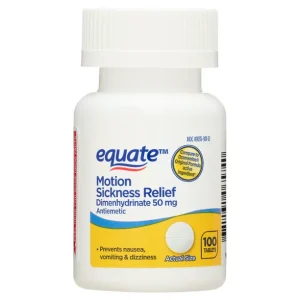
Other Home Remedies and Treatments for Vertigo
While the traditional treatment for vertigo often involves medications to reduce the symptoms of dizziness and nausea, other home remedies may relieve these uncomfortable sensations.
Many individuals experiencing vertigo have reported successful results from natural treatments such as chiropractic care, massage therapy, acupuncture, and dietary changes. Some studies also suggest that habits such as avoiding alcohol consumption and limiting caffeine intake may help reduce episodes of vertigo. Additionally, regular exercise has been linked with improved balance and coordination, which can help lessen the intensity of vertigo episodes.

Lifestyle Changes: Minimizing Risk of Vertigo
Vertigo is a medical condition that causes Filipinos to feel like the world around them is spinning or moving. It can be debilitating and lead to dizziness, nausea, vomiting, and balance issues. Although vertigo cannot be cured, there are lifestyle changes that can minimize your risk of experiencing its symptoms.
The first step in minimizing the risk of vertigo is to avoid activities or situations that could increase your risk for the condition. This includes activities such as drinking alcohol, smoking cigarettes, riding amusement rides, or engaging in other high-speed activities. Additionally, it’s important to look for any warning signs and symptoms of vertigo before they become problems so you can take action quickly if needed.
Other lifestyle changes that may help reduce your risk include avoiding head movements that might trigger vertigo symptoms, such as sudden turns or quick upward movements of the head.
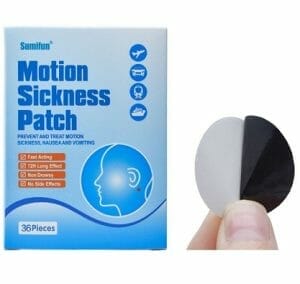
FAQs Treatments For Vertigo In The Philippines
Here are the frequently asked questions about the treatments for vertigo in the Philippines:
What causes my dizziness?
Dizziness can signify various conditions, including inner ear infections, low blood pressure, and certain medications. Not all cases of dizziness are the same; therefore, it is important to understand what may be causing your particular symptoms. Treatments for vertigo in the Philippines vary based on the condition’s underlying cause.
Commonly used treatments include physical therapy and medications designed to reduce symptoms such as nausea, vomiting, and dizziness associated with vertigo. Medical professionals in the Philippines may also suggest lifestyle changes to help manage vertigo and its accompanying symptoms. This could include avoiding activities triggering attacks or learning exercises designed to improve balance and ease dizziness.
Additionally, vestibular rehabilitation therapy is effective for some people by improving their balance and reducing feelings of dizziness when carrying out daily activities.

What is vestibular rehabilitation?
Vestibular rehabilitation is a type of physical therapy designed to help Filipino patients with balance and movement disorders, such as vertigo. It is a specialized field involving multiple treatments tailored to the individual patient’s needs. Vestibular rehabilitation has become increasingly popular in the Philippines for treating the underlying cause of vertigo and other balance-related issues.
Regarding treatments for vertigo in the Philippines, vestibular rehabilitation offers numerous advantages over traditional treatment methods. Vestibular rehabilitation utilizes exercises targeting the inner ear, brain, eyes, and neck muscles to improve balance and reduce dizziness. The exercise regimen also helps strengthen core muscles that support the spine and maintain proper posture when standing or walking.
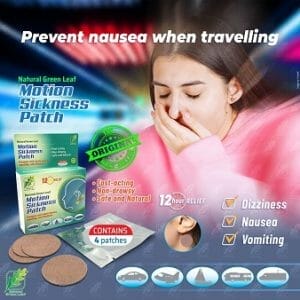
What is vestibular?
Vestibular is the medical term for parts of the inner ear responsible for balance and coordination. It is an important bodily system because it helps us to navigate our environment and keep our bodies upright. Vestibular disorders can cause dizziness, vertigo, blurred vision, unsteady gait, and other debilitating symptoms. Several treatments in the Philippines are available to address vestibular issues such as vertigo.
One treatment that has become increasingly common in recent years is vestibular rehabilitation therapy (VRT). VRT utilizes specific exercises designed to reduce dizziness, improve balance and increase strength in the affected body parts. Additionally, medication may be prescribed to help alleviate dizziness or nausea caused by certain vestibular conditions.

What are some of the best home remedies for vertigo?
Vertigo is a common medical condition that causes dizziness and loss of balance. It can affect anyone at any age but is more likely to occur in older adults. Left untreated, vertigo can lead to further health complications and even disability. Fortunately, there are treatments for vertigo available in the Philippines that may be able to help manage these symptoms. Here are some of the best home remedies for vertigo:
First, it’s important to make lifestyle changes such as getting plenty of rest and avoiding activities that might induce dizziness or imbalance. It’s also important to reduce stress levels and practice relaxation techniques such as yoga and meditation. These activities help to reduce the anxiety that may be contributing to the symptoms of vertigo. Some medications can also be used to treat vertigo, including antihistamines and some anticonvulsants. Second, it’s important to get medical treatment for vertigo as it can be a symptom of an underlying medical condition, such as a brain tumor or stroke. It s also important to get your hearing tested if you are experiencing symptoms of vertigo.
![STUGERON Cinnarizine 75mg 1 Capsule [PRESCRIPTION REQUIRED] Watsons Pharmacy](https://e52hyu4yuyt.exactdn.com/wp-content/uploads/2022/12/STUGERON-Cinnarizine-75mg-1-Capsule-PRESCRIPTION-REQUIRED-Watsons-Pharmacy-300x300.webp?strip=all&lossy=1&ssl=1)
What is the fastest remedy for vertigo?
Vertigo is a common problem among Filipinos that can be caused by inner ear damage, head trauma, or other medical conditions. It causes dizziness and loss of balance, leading to falls and other health problems. Fortunately, there are treatments for vertigo in the Philippines that can provide fast relief from this debilitating condition.
The most effective treatment for vertigo is vestibular rehabilitation therapy (VRT). This therapy helps reduce the symptoms of vertigo by retraining the brain to compensate for balance issues caused by damaged inner ear structures. VRT exercises focus on coordination, strength, and flexibility to improve balance and reduce dizziness. It is usually administered through a series of sessions over several weeks or months with a physiotherapist or occupational therapist.

What are the common symptoms of vertigo?
Vertigo is a common condition many people experience at one point or another. Characterized by vertigo, dizziness, and feeling of imbalance, it can be difficult to live with the symptoms of vertigo. Knowing the most common symptoms of this condition can help you identify when you might need to seek treatment.
The primary symptom of vertigo is a sensation that your environment is spinning or moving around you. This can cause dizziness and difficulty with balance; some people may also feel nausea or vomiting due to these symptoms. Other common vertigo-related occurrences include ringing in the ears (tinnitus), hearing loss, lightheadedness, and blurred vision. In more severe cases, Filipino patients may experience headaches, sweating, and difficulty speaking or walking steadily.
Treatments for vertigo vary depending on the severity and underlying cause of the condition.
![VERTISIN Cinnarizine 25mg 1 Tablet [Prescription Required] Watsons Pharmacy](https://e52hyu4yuyt.exactdn.com/wp-content/uploads/2022/12/VERTISIN-Cinnarizine-25mg-1-Tablet-Prescription-Required-Watsons-Pharmacy-300x300.webp?strip=all&lossy=1&ssl=1)
How do Filipino doctors reposition if you have vertigo?
Vertigo is a condition that affects millions of people and can cause severe dizziness, loss of balance, and nausea. If you are living with vertigo in the Philippines, treatment options are available to help you manage your symptoms. One of these treatments is repositioning therapy. This treatment of vertigo involves a series of head and body movements to reset the balance system and reduce dizziness.
When performing repositioning therapy for vertigo, Filipino doctors will assess your particular situation before determining the best exercises for you. You may be asked to move your head slowly from one side to another or do specific eye movements while lying on a bed. Other techniques include canalith repositioning maneuvers, which involve moving into different positions, such as sitting up or lying down on each side, to help realign the inner ear’s sensors with gravity.
![DIMEZINE Dimenhydrinate and cinnirazine 40mg20mg 1 Tablet [PRESCRIPTION REQUIRED] Watsons Pharmacy](https://e52hyu4yuyt.exactdn.com/wp-content/uploads/2022/12/DIMEZINE-Dimenhydrinate-and-cinnirazine-40mg20mg-1-Tablet-PRESCRIPTION-REQUIRED-Watsons-Pharmacy-300x300.webp?strip=all&lossy=1&ssl=1)
What causes vertigo?
Vertigo is a common disorder that often causes dizziness and spinning sensations. It can be caused by various factors such as inner ear infections, head injuries, or even changes in the position of your head. Vertigo can sometimes lead to balance problems and difficulty walking or standing. If you are experiencing symptoms of vertigo, it is important to seek medical advice for proper diagnosis and treatment.
In the Philippines, treatments for vertigo involve medications and physical therapy exercises that help reduce dizziness and improve balance. Doctors in the Philippines may also recommend lifestyle changes such as reducing salt intake, avoiding alcohol consumption, increasing fluid intake, getting enough sleep, wearing comfortable shoes with good arch support, and limiting activities like running or jumping on uneven surfaces.
What are the types of vertigo?
Vertigo is a common condition that affects people of all ages and backgrounds. It is characterized by dizziness or an unsteady feeling and can make everyday activities difficult. Understanding the types of vertigo can help diagnose the condition correctly and determine which treatments for vertigo in the Philippines are most suitable.
The two main types of vertigo are peripheral and central. Peripheral vertigo is due to issues with parts of the inner ear, such as inflammation or nerve damage, disrupting balance signals sent to the brain. Central vertigo occurs when something is wrong with other parts of the nervous system, such as an infection or stroke, affecting how signals from vision and hearing affect balance. In either case, symptoms may include nausea, vomiting, ringing in the ears (tinnitus), loss of hearing, or vision disturbances.
What medicines may help alleviate vertigo?
Vertigo is a condition that can cause dizziness and the feeling of spinning due to an imbalance in the inner ear. People who suffer from vertigo commonly experience nausea, vomiting, and difficulty standing or walking. Treatments for vertigo vary depending on the severity of the symptoms but may include medications such as antihistamines, anticholinergics, or benzodiazepines. In the Philippines, there are several medicines available to help alleviate vertigo.
One medicine used to treat vertigo is betahistine dihydrochloride. This medication increases blood flow in the inner ear and helps reduce dizziness associated with certain types of vertigo. Additionally, another option is prochlorperazine maleate which helps relieve symptoms like nausea and vomiting caused by vestibular disturbances associated with vertigo.
What are the symptoms and causes of vertigo?
Vertigo is a medical condition that causes Filipino patients to experience a sensation of spinning, dizziness, and loss of balance. It can be caused by damage to the inner ear due to an infection or injury, as well as from conditions like migraines and anxiety disorders. Symptoms of vertigo include nausea, vomiting, sweating, double vision, hearing difficulty, and problems with walking.
Treatments for vertigo in the Philippines depend on the condition’s underlying cause. For example, if vertigo is caused by an infection or injury to the ear, then Filipino patients may need antibiotics or surgery to repair any damage done. If it is due to migraine headaches, medication such as antiemetic drugs can be prescribed to relieve symptoms associated with vertigo.
How to improve balance when you have vertigo?
Vertigo is a common ailment, and while it can be uncomfortable, there are treatments that can help improve balance when you have vertigo. In the Philippines, several medical treatments are available to alleviate vertigo symptoms. These include medications such as antihistamines and vestibular suppressants. Additionally, physical therapy exercises such as head and neck strengthening and balance board activities effectively manage vertigo-related dizziness and imbalance.
Furthermore, complementary therapies can also help reduce symptoms associated with vertigo. Examples of these therapies include acupuncture, Yoga, and Tai Chi, which strengthen the body’s systems that maintain balance. Additionally, incorporating lifestyle changes such as reducing stress levels or modifying eating habits may improve overall health and reduce the severity of vertigo-related symptoms.
How do Filipino doctors provide vertigo diagnosis to their patients?
Vertigo is a symptom of an underlying condition that can cause severe dizziness, nausea, and vomiting. It affects millions of Filipinos, including those OFWs working abroad. Filipino doctors must diagnose this disorder to determine the best treatment for their Filipino patients.
Diagnosing vertigo involves several steps: first, the physician will take a full patient history and perform tests such as balance tests or MRI scans to rule out other possible causes for their symptoms. The Filipino doctor may also order blood work to check for any infections or medical conditions that could be contributing factors. Additionally, they may ask questions about lifestyle habits, including diet and exercise routines, that could influence the patient’s health status in the Philippines.
Can physical therapy help improve balance when you have vertigo?
Vertigo is usually a condition that causes dizziness and nausea as well as an imbalance in the body. It can be caused by various things, from inner ear disorders to neck muscles and joint abnormalities. For Filipino individuals living with vertigo, seeking treatments can be difficult, especially in countries like the Philippines, where medical treatment options are limited.
Physical therapy may offer those with vertigo help improve their balance and alleviate symptoms without needing medication or surgery. This therapy focuses on strengthening muscles, improving flexibility, and using specific exercises to improve balance while reducing dizziness and nausea. Practicing these exercises regularly allows individuals to relieve vertigo without relying on costly medications or more invasive treatments.
Final Thoughts: Treatments For Vertigo In The Philippines
In conclusion, vertigo is a condition that can cause significant disruption to one’s everyday life. Fortunately, various treatment options are available to those suffering from vertigo, depending on the severity and type of the condition. It is important to consult with a medical professional to determine the right course of action for you. With the right treatment plan and lifestyle modifications, it is possible to reduce or eliminate the symptoms associated with vertigo.
Sources: Treatments For Vertigo In The Philippines
- Dizziness and vertigo – Better Health
- Common cause of vertigo: Symptoms and Causes – Penn Medicine
- Diuretics for Ménière’s disease or syndrome – PMC – NCBI
- Labyrinthitis and vestibular nerve – NHS
- Common cause of vertigo: Symptoms and causes – Mayo Clinic
- Migraine-associated vertigo: Vestibular migraine – Migraine Trust
- People with vertigo: Causes, symptoms, and treatments – Medical News Today
- Vertigo without treatment: Causes, Symptoms, and Treatment – WebMD
- Acute vertigo: getting the diagnosis right | The BMJ
- Peripheral Vestibular System – an overview – ScienceDirect
- Vertigo is the feeling of benign paroxysmal positional vertigo (BPPV) – Mayo Clinic
- Vertigo is a common symptom of ear, nose, and throat disorders – MSD Manuals
- Severe Vertigo causes & treatment – Illnesses & conditions – NHS inform
- What are examples of neurologic symptoms? – dphhs
- Peripheral vestibular disorders : Current Opinion in Neurology – Wolters Kluwer Health
- Migrainous vertigo – Neurology.org
- Auditory symptoms and psychological characteristics in adults – NCBI
- Migraine-associated dizziness: What is Vestibular Migraine? | Ménière’s Society
- Treatment of migraine-associated vertigo: Diagnosis and Treatment – PMC
- Older Adults and Balance Disorders | National Institute on Aging
Disclaimer
This website is intended to educate both members of the general public and those working in the medical field on the prevalence, causes, and methods for preventing, diagnosing and treating diseases that affect people throughout their lives. This website’s content is provided solely for informational reasons and is not meant to serve as a substitute for the advice of a qualified medical practitioner.









